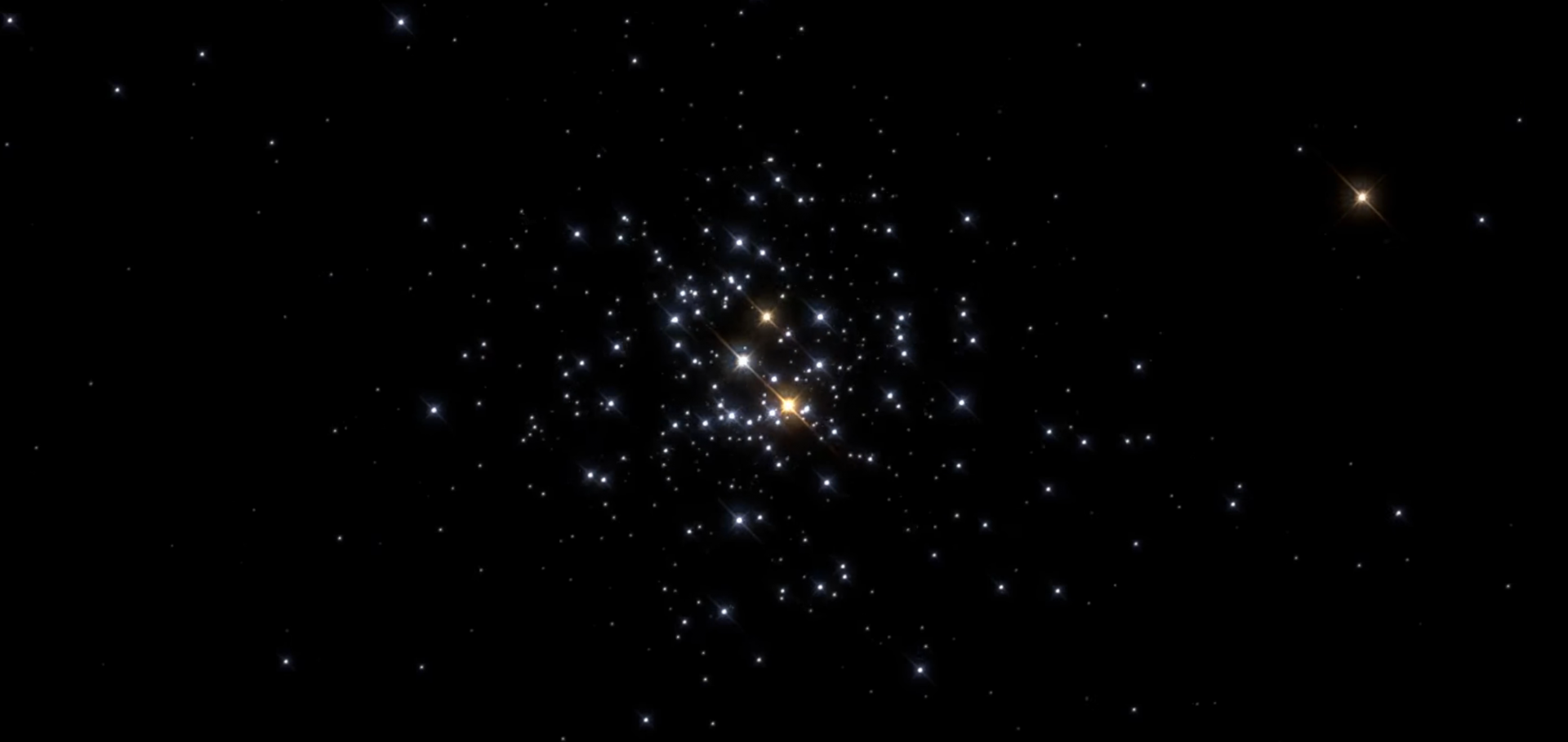Formation of massive seed black holes via collisions and accretion
Abstract:
Models aiming to explain the formation of massive black hole seeds, and in particular the direct collapse scenario, face substantial difficulties. These are rooted in rather ad hoc and fine-tuned initial conditions, such as the simultaneous requirements of extremely low metallicities and strong radiation backgrounds. Here, we explore a modification of such scenarios where a massive primordial star cluster is initially produced. Subsequent stellar collisions give rise to the formation of massive (104−105 M⊙) objects. Our calculations demonstrate that the interplay among stellar dynamics, gas accretion, and protostellar evolution is particularly relevant. Gas accretion on to the protostars enhances their radii, resulting in an enhanced collisional cross-section. We show that the fraction of collisions can increase from 0.1 to 1 per cent of the initial population to about 10 per cent when compared to gas-free models or models of protostellar clusters in the local Universe. We conclude that very massive objects can form in spite of initial fragmentation, making the first massive protostellar clusters viable candidate birth places for observed supermassive black holes.Dynamical ejections of stars due to an accelerating gas filament
Abstract:
Observations of the Orion A integral shaped filament (ISF) have shown indications of an oscillatory motion of the gas filament. This evidence is based on both thewave-likemorphology of the filament and the kinematics of the gas and stars, where the characteristic velocities of the stars require a dynamical heating mechanism. As proposed by Stutz & Gould, such a heating mechanism (the 'Slingshot') may be the result of an oscillating gas filament in a gas-dominated (as opposed to stellar-mass dominated) system. Here we test this hypothesis with the first stellar-dynamical simulations in which the stars are subjected to the influence of an oscillating cylindrical potential. The accelerating, cylindrical background potential is populated with a narrow distribution of stars. By coupling the potential to N-body dynamics, we are able to measure the influence of the potential on the stellar distribution. The simulations provide evidence that the slingshot mechanism can successfully reproduce several stringent observational constraints. These include the stellar spread (both in projected position and in velocity) around the filament, the symmetry in these distributions, and a bulkmotion of the stars with respect to the filament. Using simple considerations, we show that star-star interactions are incapable of reproducing these spreads on their own when properly accounting for the gas potential. Thus, properly accounting for the gas potential is essential for understanding the dynamical evolution of star-forming filamentary systems in the era of Gaia (GaiaCollaboration 2016).The binarity of the local white dwarf population
Abstract:
Context. As endpoints of stellar evolution, white dwarfs (WDs) are powerful tools to study the evolutionary history of the Galaxy. In particular, the multiplicity of WDs contains information regarding the formation and evolution of binary systems.
Aims. Can we understand the multiplicity of the local WD sample from a theoretical point of view? Population synthesis methods are often applied to estimate stellar space densities and event rates, but how well are these estimates calibrated? This can be tested by a comparison with the 20 pc sample, which contains ≃100 stars and is minimally affected by selection biases.
Methods. We model the formation and evolution of single stars and binaries within 20 pc with a population synthesis approach. We construct a model of the current sample of WDs and differentiate between WDs in different configurations, that is single WDs, and resolved and unresolved binaries containing a WD with either a main-sequence (MS) component or with a second WD. We also study the effect of different assumptions concerning the star formation history, binary evolution, and the initial distributions of binary parameters. We compile from the literature the available information on the sample of WDs within 20 pc, with a particular emphasis on their multiplicity, and compare this to the synthetic models.
Results. The observed space densities of single and binary WDs are well reproduced by the models. The space densities of the most common WD systems (single WDs and unresolved WD-MS binaries) are consistent within a factor two with the observed value. We find a discrepancy only for the space density of resolved double WDs. We exclude that observational selection effects, fast stellar winds, or dynamical interactions with other objects in the Milky Way explain this discrepancy. We find that either the initial mass ratio distribution in the solar neighbourhood is biased towards low mass-ratios, or more than ten resolved DWDs have been missed observationally in the 20 pc sample. Furthermore, we show that the low binary fraction of WD systems (~25%) compared to solar-type MS-MS binaries (~50%) is consistent with theory, and is mainly caused by mergers in binary systems, and to a lesser degree by WDs hiding in the glare of their companion stars. Lastly, Gaia will dramatically increase the size of the volume-limited WD sample, detecting the coolest and oldest WDs out to ≃50 pc. We provide a detailed estimate of the number of single and binary WDs in the Gaia sample.


